Introduction
Enterprise resource planning is one of the emerging trends in business management operations in the modern society. Leon (2008) says, “Enterprise Resource Planning refers to automation and integration of a company’s core business to help them focus on effectiveness and simplified success.” The system enables a company to integrate all the departments using a single computer system which makes it possible for the departments to share information whenever this is necessary. The rapid changes taking place in the external business environment makes information one of the key weapons that a firm can use to manage competition.
According to Garg and Venkitakrishnan (2004), a firm should be in a position to acquire information as fast as possible, analyze it and then make it available to all the relevant stakeholders. In the past, most organizations had data management system that focused on analyzing and maintaining data per department. This meant that if an officer working in the finance department wanted a piece of information from the human resource department, he or she had to make a formal request to this department and wait for the file to be sent.
This would take several hours, or even days. In such cases, time would be lost trying to transfer data from one department to another. This waste is too expensive in the current business environment where perfection is the only option of remaining competitive in the market. Speed is an important factor in gaining competitive edge over others, and this is what enterprise resource planning offer to its users. Many organizations are currently using this programme to ensure that internal communication is improved in order to achieve their targets. This research will analyze the relevance of enterprise resource management to the modern organisations.
It is clear that enterprise resource planning is an important system that organisations should consider implementing in order to remain competitive in the market. At this stage, the researcher will analyze ten modules enterprise resource planning in order to bring out its relevance to organisations in the current business environment.
Supply Chain Management
The field of supply chain management has attracted the attention of many scholars who have been trying to come up with the best practice in this field. Monk and Wagner (2009) say, “Supply chain activities transform natural resources, raw materials, and components into a finished product that is delivered to the end customer.” This means that it goes beyond delivering products to the market. It starts with identifying the right raw materials that are to be used in manufacturing of the products.
Once the raw materials have been obtained from various sources, they have to be stored within the organisation before they can be taken for the production of the products needed in the market. From the production plants, the finished products will be temporarily stored within the firm before they can finally be transported to the market (Ray, 2011). The entire process of this supply chain should involve due diligence from the responsible unit, the supply chain and logistics department, to ensure that customers have the products they need within the right time.
According to Pearlson and Saunders (2013), there is a changing trend in the supply chain management. The scholar says that the market is increasingly getting competitive, and the stakeholders must find the means of improving their supply chain in order to minimise the cost of the products in the market. Turban, Volonino and Pollard (2010) says that firms must use the strategies that would lower costs of the products when they are finally availed to the customers in the market. One of the best ways of doing this is by reducing the time taken to deliver a product from one stage to the other. Longer storage time leads to increased cost of production.
The storage costs can be reduced by minimising the time that the products or raw materials take within the firm’s stores. This means that an organisation must embrace a strategy that would help it ensure that its products take as minimal time as possible in the stores from one stage to another. In so doing, the cost of electricity, labour, and space will be minimised. The costs associated with the damage due to prolonged storage are also eliminated. The reduction in the cost of delivering a unit of the product to the market will enable the firm to lower its prices in the market. This will make its products more competitive than it used to be before such improvements (Pearlson & Saunders, 2013). This will also increase the profitability of the firm.
The products should also be delivered in the market when it is in the right condition that is expected by the customers. According to Ray (2011), many firms incur a lot of costs when their products get damaged while on transit. The costs will vary depending on the nature of the product. Some products are highly perishable, and need a faster delivery channel (Turban, Volonino & Pollard, 2010). Products such as flowers and greens will easily be damaged while on transit if the channel is not fast enough. Other products such as glass are not highly perishable, but very fragile. They need to be handled with care in order to protect them from any form of damage. Any damage on the product increases its cost in the market.
Many companies are using the emerging technologies when transporting their products to the market. Using some of the modern means of transport such as the electric trains shortens the time taken to deliver the products to the market. There are also some special containers suitable for various products during transportation. The containers do not only offer security to the goods on transit from damage or theft, but they also enable the transporter to maximise on the available space.
The invention of the mobile tracker helps in determining the location of the goods on transit in real time. This means that a firm can easily determine if there is any emergency and send a response team in time. For instance, when the goods are taken to a wrong route, the tracker will alert the firm and measures to recover the products can be taken. This has improved efficiency of the supply chain to the firms that have embraced this technology (Garg & Venkitakrishnan, 2004). The following diagram shows specific activities in supply chain management that can be integrated and enhanced using enterprise resource planning.
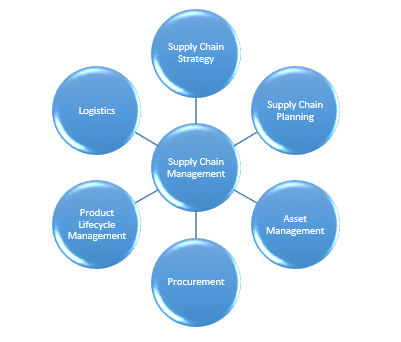
Customer Relationship Management
Changes taking place in the market have brought a number of challenges that a firm is forced to deal with in order to achieve success. As the competition gets stiff in the market, firms have come to realise that the only way through which they can achieve success is to develop close relationships with the customers. Relational selling is gaining popularity in the market as firms struggle to maintain their cordial relationship with the customers. Appealing to their emotions is one of the ways of ensuring that they remain loyal to a given firm (Leon, 2008). This is especially so when dealing with a business-to-business relationship. Organisational buyers are very important to a business entity because some of them can be large enough to support all the needs of a firm. The diagram below shows the process involved in customer relationship management.
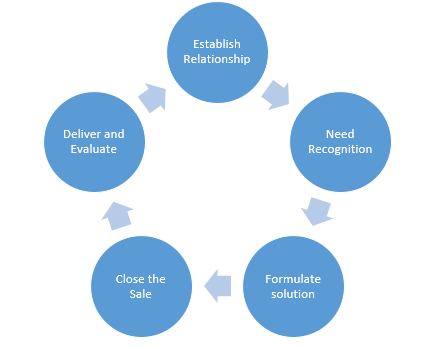
The above processes can easily be enhanced if a firm embraces the use of enterprise resource planning.
Decision Support System
Decision support system has gained massive popularity in the modern business environment. Managers have realized that before making any strategic decisions, they need information that would guide their decision. Decision support system offers the best opportunity to analyze variable and to determine their relationship before coming up with a solution. This is demonstrated in the figure below.
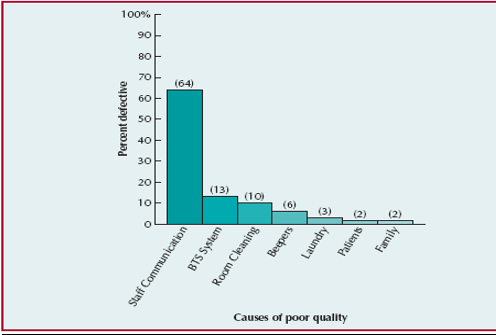
When enterprise resource planning is used in this process, it becomes easy to get the relevant information that would be needed by the decision makers.
Manufacturing and Production Planning
The market is increasingly becoming competitive as firms struggle to gain new markets. According to Pearlson and Saunders (2013), it is no longer safe for a firm to restrict itself within a regional market because an attack on such regional market by other external firms may affect their profitability. For this reason, firms must find a way of expanding their production to the global market. However, this has a number of challenges that must be addressed by an individual firm in order to achieve the desired success. Ray (2011) says that, a firm can only export its products to other markets if it costs it less to produce and avail its products in the market when compared to the other local firms. Firms have, therefore, realized the importance of making their production strategies very efficient in order to lower their cost of production.
Production planning and control has been identified as the main solution that can help firms lower their cost of production while still maintaining the quality of their products. Some of the most successful firms in the world market have achieved their success because of their efficient production planning and control strategies. Apple is one such successful firm that has realized success through this strategy. Using enterprise resource planning in the production planning would be important because it avails the needed information to the relevant authorities.
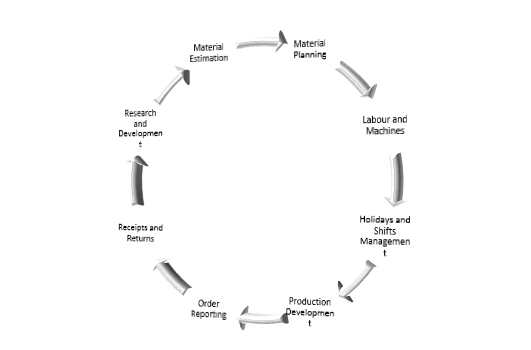
The above production activities can be easily integrated using enterprise resource planning in order to improve the efficiency of the system.
Project Management
Project management is one of the most important tasks in any organisation. Planning the projects takes time, and the project manager would need an effective communication system in order to achieve the set objectives. The figure below shows important offices in any project that an organisation initiates.
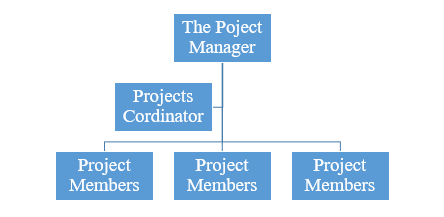
These offices should be closely coordinated using an appropriate information management system. Using enterprise resource management would make internal and external communication easy when implementing a project.
Human Resources Management
Human resource management has become a challenging task to many organisations as employees become very demanding. The figure below shows some of the specific activities that are involved when managing employees.
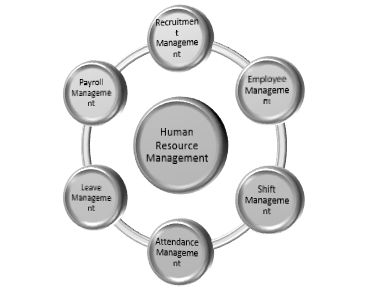
Enterprise resource planning offers the perfect opportunity for the human resource manager to conduct the above tasks efficiently in order to ensure that employees remain motivated.
Data Warehouse
According to Monk and Wagner (2009), many organisations have always relied on manual means of managing their databases. However, enterprise resource planning offers the best opportunity for a firm to manage its database more efficiently and with few employees. The diagram below shows important databases that can be improved using this system.
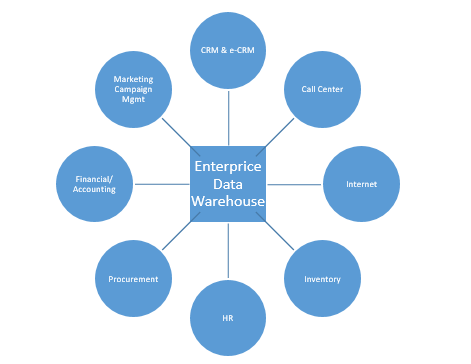
Inventory management
Inventory management was once an ignored area of management that was assumed to be the responsibility of departmental heads. However, many organisations currently consider it an important area with the following specific activities.
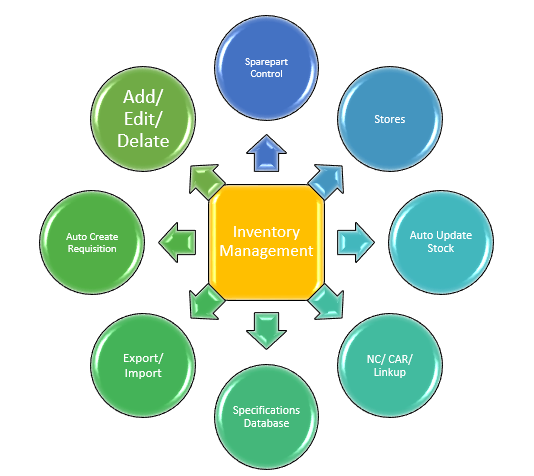
Achieving success in inventory management requires enterprise resource planning that would help the concerned officers to monitor all the inventories within the organisation.
Fixed Asset Management
Fixed asset management needs proper information system that would enable the relevant manager to record and manage history of the fixed assets once they are purchased. Using enterprise resource planning, it would be easy to know what an asset needs repair or disposal. The activities involved at this stage are shown in the diagram below.

Purchase Order Management
Purchase order management is becoming one of the areas that are helping firms achieve success. In order to cut costs of operation, the management must have the right information about cheap sources of materials that are of the right quality. The following activities can be improved if a firm uses enterprise resource planning.

Summary
It is clear that enterprise resource management is a tool that current organisations cannot ignore if they are to achieve their strategic objectives. Organisations in the modern society need communication system that is integrated. All departments should have direct communication system that would allow members of the organisation to share any relevant information within the shortest period possible. The following are some of the main points that any organisation need to observe when implementing this programme into its system.
- Enterprise resource planning does not eliminate the need to develop creative ideas of managing resource within an organisation. For this reason, the management should not ignore the relevance of the human resource in coming up with innovative ideas.
- Enterprise resource planning can only be effective enough if it is applied in the right manner. This means that the organisation must be able to identify the programme that best meets its needs in the market, and get the right workforce to manage it.
- When using enterprise resource planning, care should be taken to ensure that security measures are heightened. Any person with malicious intention can cause serious damage to the organisation if he or she gets in control of the system. The database manager must find means of protecting the information system from any access by unauthorized individuals.
- Success in using enterprise resource planning starts with ensuring that human resource understands the system and appreciates its relevance. Employees should be able to operate the system, know how and why it is necessary to protect their accounts, and be able to improve their service delivery using the system.
Conclusion
The discussion above shows that enterprise resource planning is one of the most reliable information management systems in the current business environment. The market is becoming competitive, and many firms are finding themselves in a delicate situation where they have to deliver the best products in the market. Time is of essence, and information is the tool that these organisations need to unlock their success.
Departments within an organisation must be properly integrated so that information can easily be shared by relevant officers whenever there is need. This data management system offers the best opportunity for the top managers to monitor what is going on in the entire organisation and to identify areas of weaknesses. It enables the mid managers to communicate easily amongst themselves and to share data within the shortest period possible. It enables junior employees to understand the specific tasks that they are expected to do, and the time within which such tasks should be completed. To the owners of a firm, this system offers them a perfect opportunity to determine the efficiency of their organisation.
All the stakeholders stand to benefit from a successful application of this system. However, it is necessary to appreciate that this comes at a cost to some of the stakeholders. When this system is implemented, some of the employees may lose their jobs, especially those who were previously managing the analogue database. The management may have to incur the cost of installing the system, regular maintenance, and training of the employees on how to use it effectively. The management must be ready with measures that may help counter an unauthorized entry into the system.
Resources
Garg, V. K., & Venkitakrishnan, N. K. (2004). Enterprise resource planning: Concepts and practice. New Delhi: Prentice-Hall of India Private Limited. Web.
Leon, A. (2008). Enterprise resource planning. New Delhi: Tata McGraw-Hill. Web.
Monk, E. F., & Wagner, B. J. (2009). Concepts in enterprise resource planning. Australia: Course Technology Cengage Learning. Web.
Pearlson, K. E., & Saunders, C. S. (2013). Strategic management of information systems: International student version. Hoboken, NJ: Wiley. Web.
Ray, R. (2011). Enterprise resource planning. New Delhi: TATA McGraw Hill Education. Web.
Turban, E., Volonino, L., & Pollard, C. (2010). Information technology for management: Transforming organizations in the digital economy. Hoboken, NJ: J. Wiley & Sons. Web.
